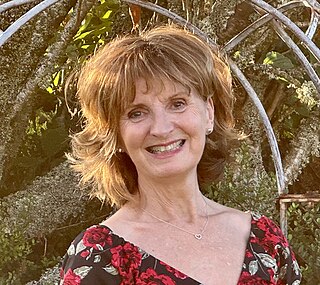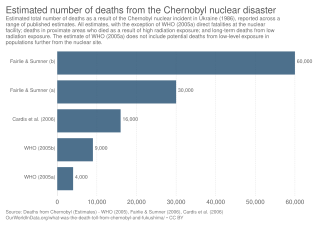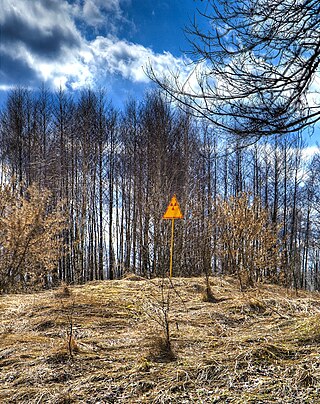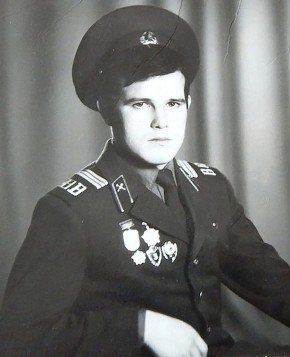Related Research Articles

Chernobyl or Chornobyl is a partially abandoned city in the Chernobyl Exclusion Zone, situated in the Vyshhorod Raion of northern Kyiv Oblast, Ukraine. Chernobyl is about 90 kilometres (60 mi) north of Kyiv, and 160 kilometres (100 mi) southwest of the Belarusian city of Gomel. Before its evacuation, the city had about 14,000 residents. While living anywhere within the Chernobyl Exclusion Zone is technically illegal today, authorities tolerate those who choose to live within some of the less irradiated areas, and an estimated 150 people live in Chernobyl in 2020.

Yury Bandazhevsky, former director of the Medical Institute in Gomel (Belarus), is a scientist working on consequences of the Chernobyl disaster. He was the founding Rector of Gomel State Medical Institute in Belarus in 1991, specially dedicated to scientific work on the 1986 Chernobyl disaster. Since 2013, Professor Bandazhevsky has been leading Chernobyl Ecology and Health in Ukraine, supported by European Commission. In the aftermath of Chernobyl accident and also 2020 April wildfire near Chernobyl, Bandazhevsky has been calling for international help.

Pripyat, also known as Prypiat, is an abandoned industrial city in Kyiv Oblast, Ukraine, located near the border with Belarus. Named after the nearby river, Pripyat, it was founded on 4 February 1970 as the ninth atomgrad to serve the nearby Chernobyl Nuclear Power Plant, which is located north of the abandoned city of Chernobyl, after which the power plant is named. Pripyat was officially proclaimed a city in 1979 and had grown to a population of 49,360 by the time it was evacuated on the afternoon of 27 April 1986, one day after the Chernobyl disaster.

The Chernobyl Nuclear Power Plant Zone of Alienation, also called the 30-Kilometre Zone or simply The Zone, was established shortly after the 1986 Chernobyl disaster in the Ukrainian SSR of the Soviet Union.

Adi Marie Roche is an Irish activist, anti-nuclear advocate, and campaigner for peace, humanitarian aid and education. She founded and is CEO of Chernobyl Children's Project International. She has focused on the relief of suffering experienced by children in the wake of the 1986 Chernobyl nuclear disaster. She was a failed candidate in 1997 Irish presidential election.

The Chernobyl disaster began on April 26, 1986, with the explosion of the No. 4 reactor of the Chernobyl Nuclear Power Plant near the city of Pripyat in northern Ukraine, near the Belarus border in the Soviet Union. It is one of only two nuclear energy accidents rated at the maximum severity on the International Nuclear Event Scale, the other being the 2011 Fukushima nuclear accident. The response involved more than 500,000 personnel and cost an estimated 18 billion rubles. It remains the worst nuclear disaster in history, and the costliest disaster in human history, with an estimated cost of $700 billion USD.

Chernobyl Children International (CCI) is a non-profit, international development, medical, and humanitarian organisation that works with children, families and communities that continue to be affected by the economic outcome of the 1986 Chernobyl accident. The organisation's founder and chief executive is Adi Roche. Before 2010, it was known as Chernobyl Children's Project International (CCPI).

The Chernobyl disaster of 26 April 1986 triggered the release of radioactive contamination into the atmosphere in the form of both particulate and gaseous radioisotopes. As of 2024, it remains the world's largest known release of radioactivity into the natural environment.

Chernobyl liquidators were the civil and military personnel who were called upon to deal with the consequences of the 1986 Chernobyl nuclear disaster in the Soviet Union on the site of the event. The liquidators are widely credited with limiting both the immediate and long-term damage from the disaster.

The Chernobyl disaster is the world's worst nuclear accident to date.

The Red Forest is the ten-square-kilometre (4 sq mi) area surrounding the Chernobyl Nuclear Power Plant within the Exclusion Zone, located in Polesia. The name "Red Forest" comes from the ginger-brown colour of the pine trees after they died following the absorption of high levels of ionizing radiation as a consequence of the Chernobyl nuclear disaster on 26 April 1986. The site remains one of the most contaminated areas in the world today.

Christopher Busby is a British scientist primarily studying the health effects of internal ionising radiation. Busby is a director of Green Audit Limited, a private company, and scientific advisor to the Low Level Radiation Campaign (LLRC).
The Chernobyl Forum is the name of a group of UN agencies, founded on 3–5 February 2003 at the IAEA Headquarters in Vienna, to scientifically assess the health effects and environmental consequences of the Chernobyl accident and to issue factual, authoritative reports on its environmental and health effects.

Black Wind, White Land: Living With Chernobyl is a 1993 documentary film, researched and produced by the founders of the Chernobyl Children International and explores the 1986 Chernobyl disaster and its consequences for the development of people in Belarus, Russia and Ukraine. The film was directed by Gene Kerrigan and produced by Ali Hewson, the wife of U2's singer Bono.

White Horse is a short documentary by filmmakers Maryann DeLeo and Christophe Bisson that features a man returning to his Ukraine home for the first time in twenty years. Evacuated from the city of Pripyat, Ukraine in 1986 due to the Chernobyl disaster, he has not returned since then. DeLeo is the same filmmaker of the 2004 Academy Award-winning short film Chernobyl Heart.

The Chernobyl disaster, considered the worst nuclear disaster in history, occurred on 26 April 1986 at the Chernobyl Nuclear Power Plant in the Ukrainian Soviet Socialist Republic, then part of the Soviet Union, now in Ukraine. From 1986 onward, the total death toll of the disaster has lacked consensus; as peer-reviewed medical journal The Lancet and other sources have noted, it remains contested. There is consensus that a total of approximately 30 people died from immediate blast trauma and acute radiation syndrome (ARS) in the seconds to months after the disaster respectively, with 60 in total in the decades since, inclusive of later radiation induced cancer. However, there is considerable debate concerning the accurate number of projected deaths that have yet to occur due to the disaster's long-term health effects; long-term death estimates range from up to 4,000 for the most exposed people of Ukraine, Belarus, and Russia, to 16,000 cases in total for all those exposed on the entire continent of Europe, with figures as high as 60,000 when including the relatively minor effects around the globe. Such numbers are based on the heavily contested linear no-threshold model.

Chernobyl is a 2019 historical drama television miniseries that revolves around the Chernobyl disaster of 1986 and the cleanup efforts that followed. The series was created and written by Craig Mazin and directed by Johan Renck. It features an ensemble cast led by Jared Harris, Stellan Skarsgård, Emily Watson, and Paul Ritter. The series was produced by HBO in the United States and Sky UK in the United Kingdom.

Boris Yevdokimovich Shcherbina was a Ukrainian Soviet politician who served as a Deputy Chairman of the Council of Ministers of the Soviet Union from 1984 to 1989.

Vasily Ivanovich Ignatenko was a Soviet firefighter who was among the first responders to the Chernobyl disaster. He worked as an electrician before being conscripted into the Soviet Armed Forces in 1980, where he completed his two years of service as a military firefighter. Afterwards, he took up employment as a paramilitary firefighter with Fire Brigade No. 6, which was based out of Pripyat. On 26 April 1986, Ignatenko's fire brigade was involved in mitigating the immediate aftermath of the Chernobyl disaster; fighting the fires that broke out following the initial explosion of Reactor 4 at the Chernobyl Nuclear Power Plant. While on site, Ignatenko received a high dose of radiation, leading to his death at a radiological hospital in Moscow eighteen days later.
References
- ↑ 76th Academy Awards Nominees and Winners Archived February 19, 2006, at the Wayback Machine , Academy of Motion Picture Arts and Sciences, February 29, 2004.
- ↑ Bose, AS; Shetty, V; Sadiq, A; Shani, J; Jacobowitz, I (August 2009). "Radiation induced cardiac valve disease in a man from Chernobyl". Journal of the American Society of Echocardiography. 22 (8): 973.e1–3. doi:10.1016/j.echo.2009.03.027. PMID 19647162.
- ↑ Kinkead, Gwen: Brooklyn Girl Journeys To Chernobyl's Heart, The New York Observer , July 11, 2004.
- ↑ Special commemorative meeting to observe the twentieth anniversary of the Chernobyl catastrophe Archived December 15, 2007, at the Wayback Machine , United Nations, 28 April 2006.
- ↑ Chernobyl Heart (HBO).
- ↑ Ukraine - Chernobyl Heart Archived 2007-08-07 at the Wayback Machine , Foreign Correspondent (ABC TV), 26 April 2005.